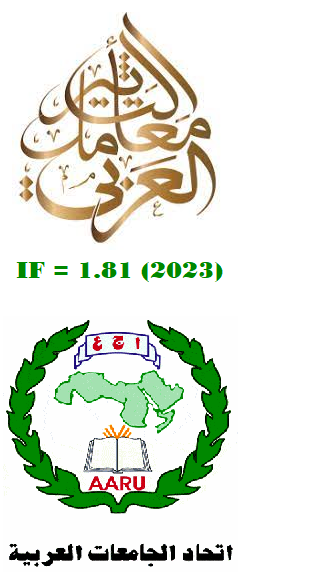Ernest Hemingway’s Iceberg Narrative Method of The Old Man and the Sea
Abstract
In most of his fictional works and in the line of his previous experience as a journalist and war reporter, Ernest Hemingway developed writing techniques peculiar to him to be followed by many predecessors after him. Among the well-known techniques are the one, in which he called “the iceberg theory.” The present paper concerns itself with analyzing this literary technique used by Hemingway in “The Old Man and the Sea.” This novella, written in 1952, and awarded Nobel Prize 1954 and Pulitzer Prize 1953, achieved a great success
not only in the writer’s career but also in the world of fiction as well. Hemingway’s exceptional use of the iceberg technique renowned the novella among his masterpieces and himself as a world Avant-garde in the fictional sphere. This is due to using a simple economical language. Yet, this simple language is full of symbols, metaphors, similes, allusions, personifications, interior monologues, repetitions, soliloquies, etc. All these devices provide another cognitive approach to this story delivered in a much unsophisticated language. This unique style, though written in prose, once has their sentences broken down they may be read as poetic. The aim of this paper is to trace these elements in a novel approach to reading Hemingway’s this masterpiece.
Downloads
References
Abbasian, M.R., & Azeez, I.B. (2021). The effect of using flipped class on teaching reading comprehension at Cihan University. Cihan University-Erbil Journal of Humanities and Social Sciences, 5(1), 101-105.
Baker, C. (1972). Hemingway: The Writer as Artist. Boston: Princeton University Press.
Chang, Y.X. (2003). A Survey of American Literature. Beijing: Nankai University Press.
Faulknerm, W. (1983). “Commentary”: The Old Man and the Sea. Beijing: World Publishing Corporation.
Hemingway, E. (1952). The Old Man and the Sea. New York: Charles Scribner’s Sons.
Kenneth, G. (1991). Commentary in York Notes: The Old Man and the Sea. Beijing: World Publishing Corporation.
Rauf, R. (2021). Tropology and stylistic approach to Ernest Hemingway’s The Old Man and the Sea. Journal of Al-Farhedis Arts, 13(47), 473-478.
Rendy, S. (2013). Translation Analysis on Figurative Language in Hemingway’s “The Old Man and The Sea” Faculty of Humanities. Semarang: Dian Nuswantoro University. Available from: https://www.academia.edu/36460398 [Last accessed on 2022 Sep 07].
Royeni, S. (2020). An Analysis of Figurative Language used in The Old Man and The Sea Novel by Ernest Hemingway. Skripsi Thesis. Palembang: Universitas Muhammadiyah. Available from: https://www.repository.um-palembang.ac.id/id/eprint/11028 [Last accessed on 2022 Sep 07].
Trodd, Zoe (2007). Hemingway's camera eye: The problems of language and an interwar politics of form. The Hemingway Review. 26 (2): 7–21.
Xie, Y. (2008). 20th Centuries English and American Selected ReadingsModernism Volume. Shanghai: Jiaotong University Press.
Weeks, R. P. (Ed.), (1965). Twentieth Century Perspective: Hemingway. Prentice Hall: Englewood Cliffs.
Copyright (c) 2023 Raad S. Rauf

This work is licensed under a Creative Commons Attribution-NonCommercial-NoDerivatives 4.0 International License.
Authors who publish with this journal agree to the following terms:
1. Authors retain copyright and grant the journal right of first publication with the work simultaneously licensed under a Creative Commons Attribution License [CC BY-NC-ND 4.0] that allows others to share the work with an acknowledgment of the work's authorship and initial publication in this journal.
2. Authors are able to enter into separate, additional contractual arrangements for the non-exclusive distribution of the journal's published version of the work (e.g., post it to an institutional repository or publish it in a book), with an acknowledgment of its initial publication in this journal.
3. Authors are permitted and encouraged to post their work online (e.g., in institutional repositories or on their website) prior to and during the submission process, as it can lead to productive exchanges, as well as earlier and greater citation of published work (See The Effect of Open Access).









